Karolina Hird, Angelica Evans, Christina Harward, Nicole Wolkov, and Mason Clark
Russian sources celebrated Russian advances in this area and outlined several adaptations that suggest that Russian forces are applying lessons learned from operations in southern Ukraine to other sectors of the front.[4] A Russian artillery battalion commander who is reportedly fighting in the area claimed that Russian forces are paying significant attention to counterbattery combat.[5] Another source who also claimed to be fighting in the area reported that Russian forces are using electronic warfare (EW) systems, conducting sound artillery preparation of the battlefield, and are demonstrating “clear interaction” between command headquarters, assault groups, aerial reconnaissance, and artillery elements.[6] The milblogger noted that Russian forces are not employing human wave-style “meat” assaults, and several Russian sources amplified footage of Russian armored vehicles leading a breakthrough along roadways towards Ukrainian positions, followed by infantry columns.[7]
The suggestion that Russian forces are effectively employing EW, counterbattery, artillery preparation, aerial reconnaissance, and inter/intra-unit communication is noteworthy, as Russian sources previously emphasized these tactical adaptations as the strengths of Russia’s defense against Ukrainian counteroffensive operations in southern Ukraine, particularly in June and July.[8] Furthermore, the majority of Russian forces currently fighting in the Avdiivka area are likely elements of the Donetsk People’s Republic (DNR) 1st Army Corps, which the Russian 8th Combined Arms Army predominantly controls.[9] ISW has not observed any 8th Combined Arms Army elements not from DNR formations involved in ongoing attacks, and ISW assesses current Russian offensive efforts in the Avdiivka area are likely primarily comprised of DNR forces. DNR elements have suffered from pervasive issues with abusive command culture, poor discipline, and minimal training; all of which have been exacerbated by wider issues with the integration of the DNR’s more irregular force structure into Russia’s regular military, as ISW has previously reported.[10] Reports by Russian milbloggers that units in this area are displaying effective communication may suggest that DNR forces have somewhat eased their integration into regular Russian forces and have learned lessons from previous ineffective and failed attacks in the Avdiivka area.
These tactical-level adaptations and successes, however, are unlikely to translate into wider operational and strategic gains for Russian forces. Geolocated footage shows that Russian gains around Avdiivka are concentrated to the southwest of Avdiivka, and Russian forces have not completed an operational encirclement of the settlement and will likely struggle to do so if that is their intent. Avdiivka is also a notoriously well-fortified and defended Ukrainian stronghold, which will likely complicate Russian forces’ ability to closely approach or fully capture the settlement. Russian forces additionally already control segments of the critical N20 Donetsk City-Kostyantynivka-Kramatorsk-Slovyansk highway and other routes that run near Avdiivka, so the hypothetical capture of Avdiivka will not open new routes of advance to the rest of Donetsk Oblast. As ISW previously assessed, Russian forces likely intend attacks in the Avdiivka area to fix Ukrainian forces and prevent them from redeploying to other areas of the front. However, Ukrainian officials have already identified the Avdiivka push as a Russian fixing operation, and they are unlikely to unduly commit Ukrainian manpower to this axis.[11]
Ukrainian forces continued counteroffensive operations near Bakhmut and in western Zaporizhia Oblast and reportedly advanced in both sectors of the front on October 11. The Ukrainian General Staff reported that Ukrainian forces were successful east of Klishchiivka and Andriivka near Bakhmut.[12] The Ukrainian General Staff and Tavriisk Group Commander Brigadier General Oleksandr Tarnavskyi reported that Ukrainian forces improved their tactical positions west of Robotyne.[13]
A large number of NATO member states recently announced aid packages to Ukraine against the backdrop of the 16th Ukraine Defense Group Contact Group meeting in Brussels, Belgium on October 11. Military and government officials from almost 50 countries met in Brussels, Belgium on October 11 for the beginning of the Contact Group on Defense of Ukraine, and multiple NATO states pledged aid and support to Ukraine.[14] US Secretary of Defense Lloyd Austin notably announced a new $200 million aid package on October 11, which includes AIM-9 missiles for a surface-to-air defense system that the United States will soon deliver to Ukraine. He stated that “the United States will stand with Ukraine for as long as it takes.”[15] German Defense Minister Boris Pistorius also announced a €20 million aid package on October 10 that includes 10 Leopard tanks.[16]
Russia’s Federation Council Defense and Security Committee voted to replace Senator Viktor Bondarev with Senator Vladimir Bulavin as Federation Council Defense and Security Committee Head on October 10. Russian Senator Vyacheslav Timchenko claimed on October 10 that Bondarev is resigning as part of the chairperson’s standard rotation and will remain the first deputy chairman of the Defense and Security Committee.[17] Timchenko claimed that he expects the Federation Council to approve Bulavin’s new appointment.[18] Russian insider sources noted Bondarev‘s ties to the Russian Ministry of Defense (MoD), as he previously served as Commander of the Russian Aerospace Forces (VKS) and speculated that his replacement indicates that the Russian MoD is losing influence in the “most important committee.”[19] The insider sources noted Bulavin’s previous positions in the Russian Federal Security Service (FSB) and claimed that he has ties to both Russian Security Council Secretary and former FSB Director Nikolai Patrushev and First Deputy Presidential Chief of Staff Sergey Kiriyenko.[20] If the Russian insider sources’ claims are true, Bondarev’s replacement with Bulavin could suggest that the FSB has increased its influence over the Federation Council Defense and Security Committee compared to the Russian MoD.
Russian military command continues to celebrate the 810th Naval Infantry Brigade (Black Sea Fleet) for its service in Ukraine, despite claims that the brigade was defeated and reportedly transferred to the Kherson direction. Russian Black Sea Fleet (BSF) Deputy Commander Rear Admiral Ildar Akhmerov presented awards to servicemen of the Russian 810th Naval Infantry Brigade on October 11 for repelling Ukrainian attacks in an unspecified sector of the front a week after Russian Defense Minister Sergei Shoigu partially attributed the successful Russian defensive operations around Robotyne to the brigade.[21] Ukrainian Main Military Intelligence Directorate (GUR) Head Lieutenant General Kyrylo Budanov stated on September 22 that Ukrainian forces “completely defeated“ the 810th Naval Infantry Brigade and that Russian command withdrew the brigade from western Zaporizhia Oblast.[22] A Russian milblogger claimed on October 5 that elements of the 810th Naval Infantry Brigade were transferred to the Kherson direction, indicating that the brigade may have been reconstituted or is in the process of reconstituting.[23] ISW has not observed the broader Russian information space discuss the 810th Naval Infantry Brigade’s combat operations since early to mid-September.[24] The Russian MoD is likely interested in amplifying reports of well-known units to create the image of Russian success in the information space.
Armenia continues to ostensibly distance itself from Russia after a decades-long security relationship. Armenian forces are not participating in the week-long Collective Security Treaty Organization (CSTO) “Indestructible Brotherhood-2023” exercises in Kyrgyzstan that started on October 6.[25] The Kyrgyz Presidential administration reported on October 10 that Armenian Prime Minister Nikol Pashinyan told Kyrgyz President Sadyr Japarov that he is unable to attend the Commonwealth of Independent States (CIS) Summit in Bishkek, Kyrgyzstan on October 13.[26] Pashinyan also stated on October 11 that Russian peacekeepers should return to Russia instead of Russian bases in Armenia if they leave Nagorno-Karabakh.[27]
Key Takeaways:
- Ongoing localized Russian offensive operations near Avdiivka likely demonstrate the ability of Russian forces ability to learn and apply tactical battlefield lessons in Ukraine. These tactical-level adaptations and successes, however, are unlikely to necessarily translate into wider operational and strategic gains for Russian forces.
- Ukrainian forces continued counteroffensive operations near Bakhmut and in western Zaporizhia Oblast and reportedly advanced in both sectors of the front on October 11.
- A large number of NATO member states recently announced aid packages to Ukraine against the backdrop of the 16th Ukraine Defense Group Contact Group meeting in Brussels, Belgium on October 11.
- Russia’s Federation Council Defense and Security Committee voted to replace Senator Viktor Bondarev with Senator Vladimir Bulavin as Federation Council Defense and Security Committee Head on October 10.
- Russian military command continues to celebrate the 810th Naval Infantry Brigade (Black Sea Fleet) for its service in Ukraine, despite claims that the brigade was defeated and reportedly transferred to the Kherson direction.
- Armenia continues to ostensibly distance itself from Russia after a decades-long security relationship.
- Russian forces conducted offensive operations along the Kupyansk-Svatove-Kreminna line, near Bakhmut, along the Avdiivka-Donetsk City line, in western Donetsk Oblast, in the Donetsk-Zaporizhia Oblast border area, and in western Zaporizhia Oblast and advanced in some areas on October 11.
- Russian opposition outlet Sever Realii reported on October 11 that Russian Ministry of Defense (MoD) representatives may have recruited over 1,000 convicts to serve in the Russian MoD-affiliated Redut private military company (PMC).
- Russian occupation authorities are suffering staff shortages at the Zaporizhzhia Nuclear Power Plant (ZNPP).
We do not report in detail on Russian war crimes because these activities are well-covered in Western media and do not directly affect the military operations we are assessing and forecasting. We will continue to evaluate and report on the effects of these criminal activities on the Ukrainian military and the Ukrainian population specifically on combat in Ukrainian urban areas. We utterly condemn these Russian violations of the laws of armed conflict, Geneva Conventions, and humanity even though we do not describe them in these reports.
- Russian Main Effort – Eastern Ukraine (comprised of two subordinate main efforts)
- Russian Subordinate Main Effort #1 – Capture the remainder of Luhansk Oblast and push westward into eastern Kharkiv Oblast and encircle northern Donetsk Oblast
- Russian Subordinate Main Effort #2 – Capture the entirety of Donetsk Oblast
- Russian Supporting Effort – Southern Axis
- Russian Mobilization and Force Generation Efforts
- Activities in Russian-occupied areas
- Russian Information Operations and Narratives
Russian Main Effort – Eastern Ukraine
Russian Subordinate Main Effort #1 – Luhansk Oblast (Russian objective: Capture the remainder of Luhansk Oblast and push westward into eastern Kharkiv Oblast and northern Donetsk Oblast)
Russian forces conducted offensive operations near Kupyansk and reportedly advanced on October 11. Russian sources claimed that Russian forces, including elements of the Russian 6th Combined Arms Army (CAA) and 1st Tank Army (both of the Western Military District), attacked near Synkivka (8km northeast of Kupyansk), Ivanivka (20km southeast of Kupyansk), and Kyslivka (20km southeast of Kupyansk) and advanced near Synkivka (8km northeast of Kupyansk).[28] One prominent Russian milblogger claimed that Russian forces attacked along the railway line from Lyman Pershyi (12km northeast of Kupyansk) and advanced one kilometer towards Synkivka.[29] The milblogger also claimed that Russian forces advanced about 1.5 kilometers in the direction of Ivanivka and Kyslivka and that Russian assaults in these areas are proving difficult due to dense Ukrainian mines.[30] A Ukrainian military observer stated that elements of the Russian 25th Separate Motorized Rifle Brigade (6th CAA, Western Military District) attacked near Synkivka and that elements of the Russian 47th Tank Division (Western Military District) attacked in the direction of Yahidne (23km southeast of Kupyansk) and Ivanivka.[31] The Ukrainian General Staff reported that Russian forces unsuccessfully attacked near Synkivka and Ivanivka.[32] Ukrainian Eastern Group of Forces Spokesperson Captain Ilya Yevlash stated that Russian forces conducted 30 attacks in the Kupyansk and Lyman directions on October 11, are transferring large concentrations of personnel and equipment to the Synkivka and Ivanivka areas, and are attempting to capture Kupyansk and open a land corridor to the Oskil River.[33]
Russian forces conducted offensive operations along the Svatove-Kreminna line on October 11 and reportedly advanced. Russian sources claimed that Russian forces, including elements of the newly formed Russian 25th CAA, advanced near Makiivka (22km northwest of Kreminna) and Nevske (18km northwest of Kreminna).[34] The Ukrainian General Staff reported that Ukrainian forces continue to hold Russian forces back near Makiivka and Dibrova (7km southwest of Kreminna).[35]
The Russian MoD claimed that Ukrainian forces unsuccessfully attacked along the Kupyansk-Svatove-Kreminna line near Synkivka, Ivanivka, Makiivka, and the Serebryanske forest area (10km southwest of Kreminna)on October 11.[36]
Russian Subordinate Main Effort #2 – Donetsk Oblast (Russian objective: Capture the entirety of Donetsk Oblast, the claimed territory of Russia’s proxies in Donbas)
Ukrainian forces continued offensive operations near Bakhmut on October 11 and reportedly advanced. The Ukrainian General Staff reported that Ukrainian forces achieved unspecified success east of Klishchiivka (7km southwest of Bakhmut) and Andriivka (10km southwest of Bakhmut).[37] A Russian milblogger claimed that fighting continues near Kurdyumivka (13km southwest of Bakhmut) and claimed that Ukrainian forces continued attempts to gain a foothold on the railway line east of Andriivka.[38]
Russian forces continued offensive operations near Bakhmut on October 11 but did not make any confirmed advances. The Ukrainian General Staff reported that Russian forces conducted unsuccessful attacks near Andriivka and Klishchiivka.[39] A Russian milblogger claimed that Russian forces counterattacked near Klishchiivka.[40] A Russian milblogger claimed on October 10 in a since-deleted post that Russian forces counterattacked on Bakhmut’s northern and southern flanks and that Russian forces have the initiative in the Bakhmut direction.[41]
Ukrainian forces did not conduct any claimed or confirmed offensive actions along the Avdiivka-Donetsk City line on October 11.
Russian forces made confirmed advances near Avdiivka on October 11. Geolocated footage published on October 11 indicates that Russian forces advanced south and west of Krasnohorivka (8km northwest of Avdiivka).[42] Additional geolocated footage indicates that Russian forces advanced southeast of Sieverne (6km west of Avdiivka).[43] A Ukrainian source stated that Russian forces attacked from Novoselivka Druha (9km northeast of Avdiivka), Vesele (6km north of Avdiivka), Vodyane (on the northwestern outskirts of Donetsk City), Pisky (8km southwest of Avdiivka), and Krasnohorivka (directly west of Donetsk City) and captured several unspecified positions while taking heavy losses.[44] Russian sources, including the Russian Ministry of Defense (MoD), claimed on October 10 and 11 that Russian forces advanced near Berdyachi (10km northwest of Avdiivka), Avdiivka, Sieverne, Vodiane, and Stepne (14km south of Donetsk City) and are attacking near Spartak (4km south of Avdiivka).[45] A Kremlin-affiliated milblogger claimed that Russian forces broke through the Ukrainian defense southwest of Krasnohorivka.[46] The milblogger claimed that Russian forces have not yet reached the outskirts of Sieverne or Tonenke (7km northwest of Avdiivka).[47] Ukrainian Tavriisk Group of Forces Spokesperson Colonel Oleksandr Shtupun stated that Ukrainian forces repelled Russian attacks near Ochertyne (15km northwest of Avdiivka), Keramik (14km northwest of Avdiivka), Berdychi, Stepove (8km northwest of Avdiivka), Tonenke (7km northwest of Avdiivka), Avdiivka, Lastochkyne (6km west of Avdiivka), and Pervomaiske (11km southwest of Avdiivka).[48] A Russian source claimed that Russian forces mainly attacked north of Avdiivka near Krasnohorivka and south of Avdiivka from Opytne (3km southwest of Avdiivka) towards Sieverne.[49] Other Russian milbloggers claimed that Russian forces have fire control of the road leading to Avdiivka, cutting off the supply route for Ukrainian forces in the settlement.[50]
Russian forces reportedly conducted unsuccessful attacks near Marinka on October 11. The Ukrainian General Staff reported on October 11 that Russian forces conducted unsuccessful attacks near Marinka, Pobieda (4km southwest of Marinka), and Novomykhailivka (10km south of Marinka).[51] Russian milbloggers also claimed that Russian forces attacked near Marinka and Novomykhailivka.[52]
Russian Supporting Effort – Southern Axis (Russian objective: Maintain frontline positions and secure rear areas against Ukrainian strikes)
Russian sources claimed that Ukrainian forces conducted unsuccessful ground attacks in the western Donetsk Oblast and the Donetsk-Zaporizhia Oblast border area on October 11. The Russian Ministry of Defense (MoD) claimed that Russian forces repelled Ukrainian attacks south of Novomykhailivka (between Donetsk City and Vuhledar and about 50km east of Velyka Novosilka) and northwest of Pryyutne (15km southwest of Velyka Novosilka).[53] A Russian milblogger claimed that there are ongoing meeting engagements near Novodonetske (12km southeast of Velyka Novosilka).[54]
Russian forces conducted counterattacks in western Donetsk Oblast and the Donetsk-Zaporizhia Oblast border area on October 11 and reportedly advanced in some areas. The Ukrainian General Staff stated that Ukrainian forces repelled Russian attacks southeast of Vuhledar (30km southeast of Velyka Novosilka), near Zolota Nyva (12km southeast of Velyka Novosilka), and near Volodyne (about 15km south of Velyka Novosilka).[55] A Ukrainian military observer reported that elements of the 68th Army Corps (Eastern Military District) are committed in the area between Donetsk City and east of Velyka Novosilka.[56] The military observer reported that elements of the 5th and 49th Combined Arms Armies were partially successful along the Pryyutne-Zavitne Bazhannia line (about 13km southwest of Velyka Novosilka) and pushed Ukrainian forces further back from Pryyutne, but then failed to secure further advances to even the frontline and could not advance towards Rivnopil (10km southwest of Velyka Novosilka) and Staromayorske (10km south of Velyka Novosilka).[57] Russian sources, including Zaporizhia Oblast occupation deputy Vladimir Rogov, claimed that Russian forces counterattacked from Pryyutne towards Levadne (4km northwest of Pryyutne and 18km southwest of Velyka Novosilka).[58]
Ukrainian forces continued offensive operations in western Zaporizhia Oblast on October 11 and reportedly advanced. The Ukrainian General Staff and Tavriisk Group Commander Brigadier General Oleksandr Tarnavskyi reported that Ukrainian forces improved their tactical positions west of Robotyne.[59] Russian milbloggers claimed that Ukrainian forces continued attacks near Robotyne, Novoprokopivka (just south of Robotyne), and Verbove (10km east of Robotyne).[60] Russian sources also claimed that Ukrainian forces unsuccessfully attacked from Robotyne towards Kopani (4km northwest of Robotyne).[61]
Russian forces counterattacked in western Zaporizhia Oblast on October 11 and reportedly made limited gains. The Ukrainian General Staff reported that Russian forces attacked near Inzhenerne (about 23km east of Robotyne) and Verbove.[62] Several Russian sources claimed that Russian forces counterattacked near Kopani and forced Ukrainian troops to retreat back towards the Verbove area.[63] One milblogger claimed that the renewal of Russian attacks in the Zherebyanka-Pyatykhatky sector (about 25km northwest of Robotyne) took Ukrainian forces by surprise and that Russian forces managed to advance “several hundred” meters in this direction over the course of October 10 to 11.[64]
Russian milbloggers continued to voice concern over the potential for Ukrainian counteroffensive operations across the Dnipro River in Kherson Oblast.[65] One prominent Kremlin-affiliated milblogger claimed that Ukrainian forces are preparing for these purported operations by intensifying strikes against Russian rear areas of Kherson Oblast.[66]
Russian Mobilization and Force Generation Efforts (Russian objective: Expand combat power without conducting general mobilization)
Russian opposition outlet Sever Realii reported on October 11 that Russian MoD representatives may have recruited over 1,000 convicts to serve in the Russian MoD-affiliated Redut private military company (PMC).[67] Sever Realii reported that most of the convicts serve in Redut’s “Veterans,” “Lynx,” “Tiger,” “Wolves,” and “North” detachments. Russian MoD representatives reportedly promise convicts amnesty from their crimes after six months of military service but in exchange force them to sign a one-year contract with the MoD. A Russian human rights activist told Sever Realii that the recruitment of prisoners may be more of a burden for Redut than it was for the Wagner Group because most Redut personnel do not understand how to behave around prisoners. The activist also noted that Wagner was able to recruit directly from prisons, while Redut does not have direct access to prisons and is forced to accept the convicts that Russian MoD representatives recruit.
Russian Defense Minister Sergei Shoigu visited the Russian United Aircraft Corporation’s Il-Aviastar enterprise on October 11 and inspected the production process of the Il-76MD-90A aircraft and the repair and maintenance of the An-124-100 aircraft.[68] Shoigu stated that the Russian military must maintain its aircraft and increase its fleet capacity and capabilities, noting that the Russian military is currently using military transport aviation more than twice as much as during the “most intense times” of the Soviet period.
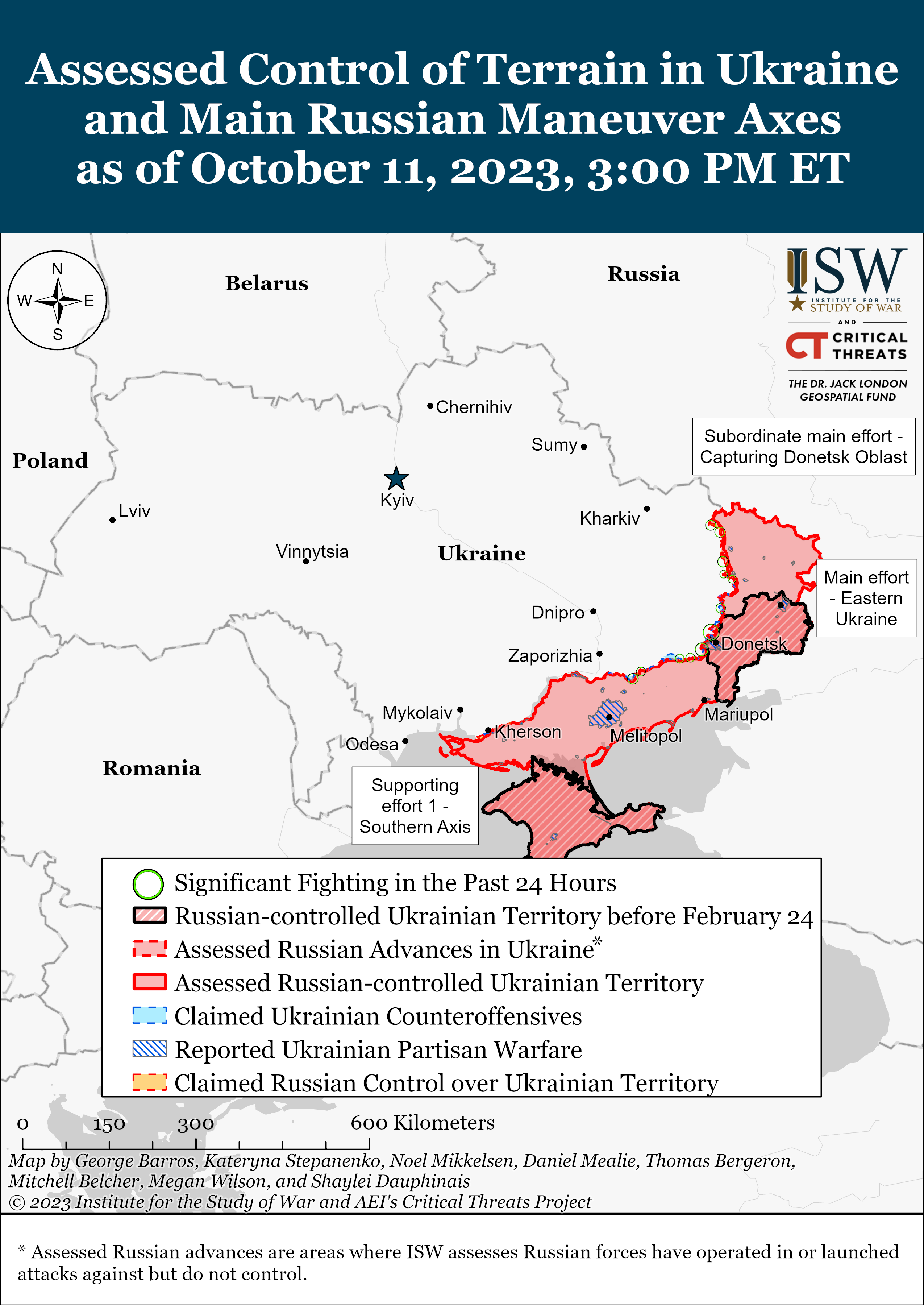
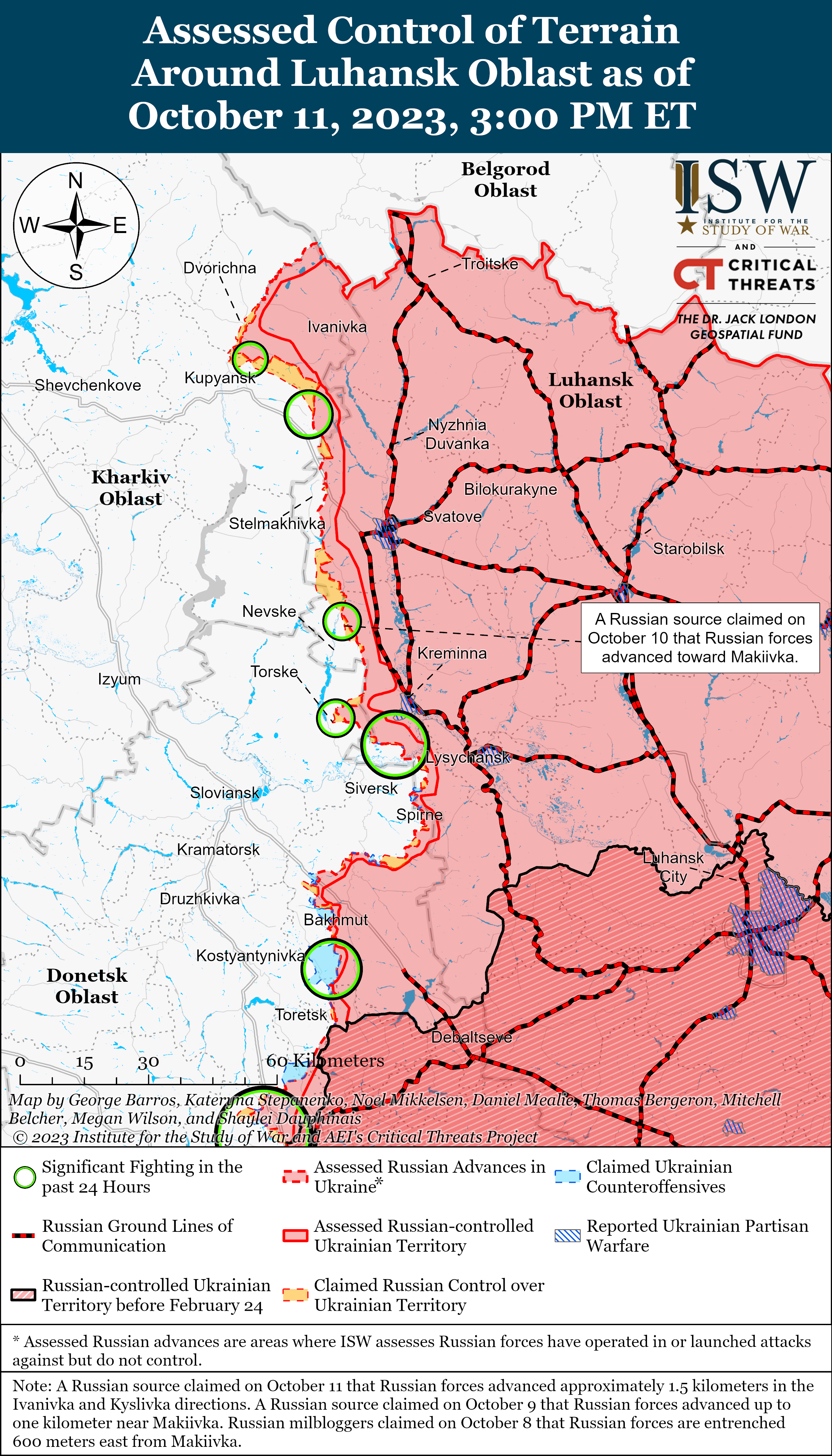

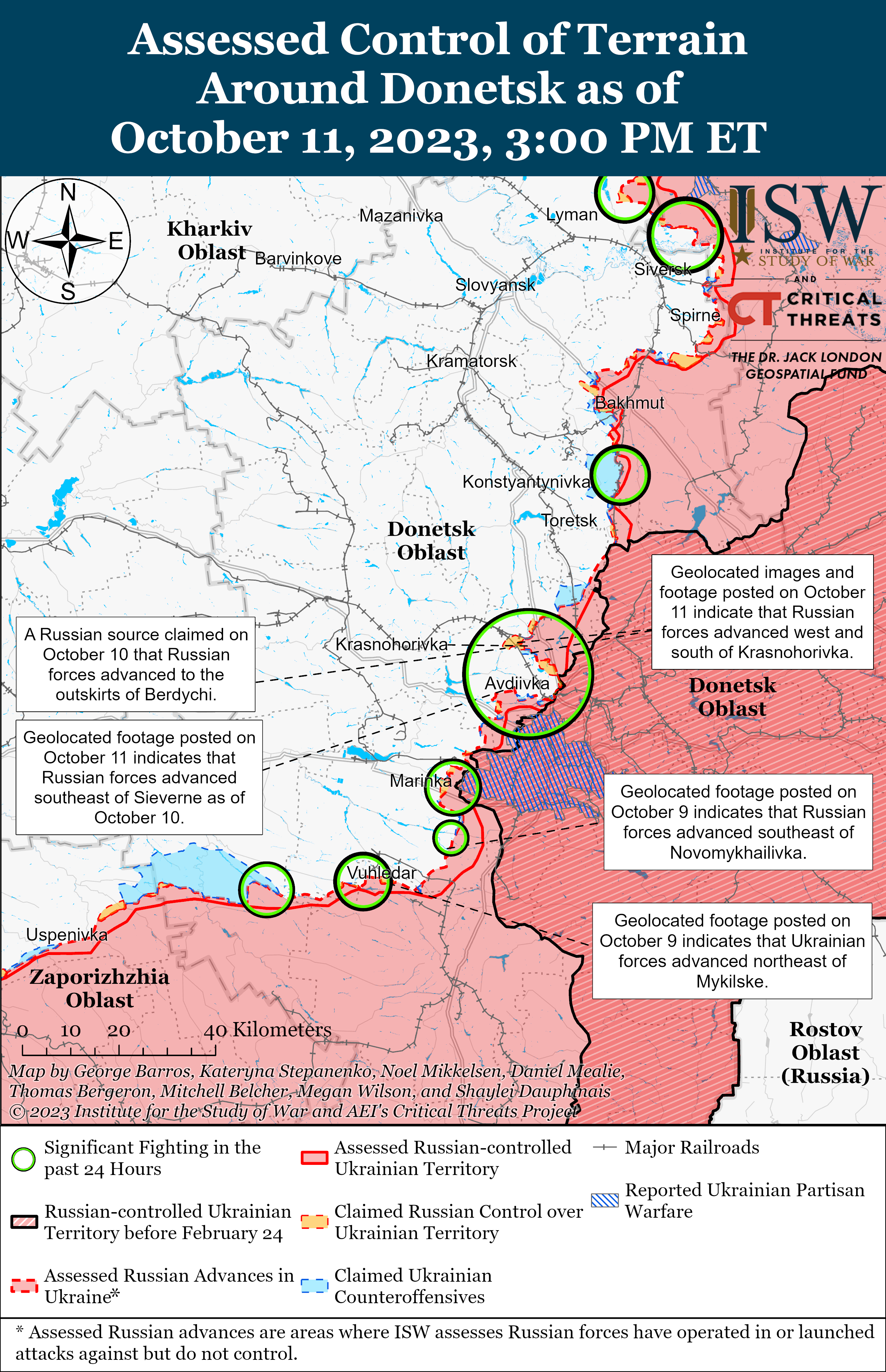
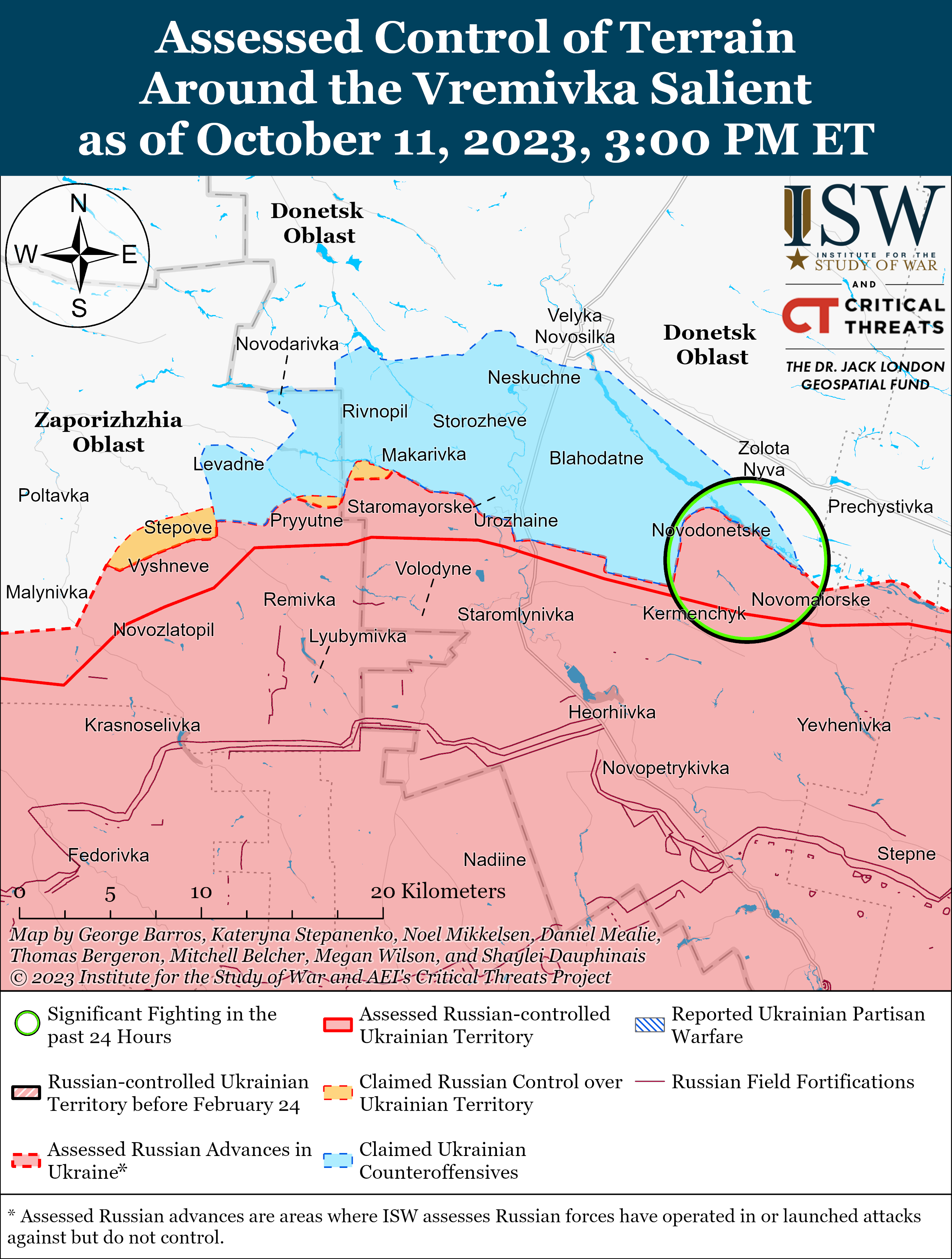
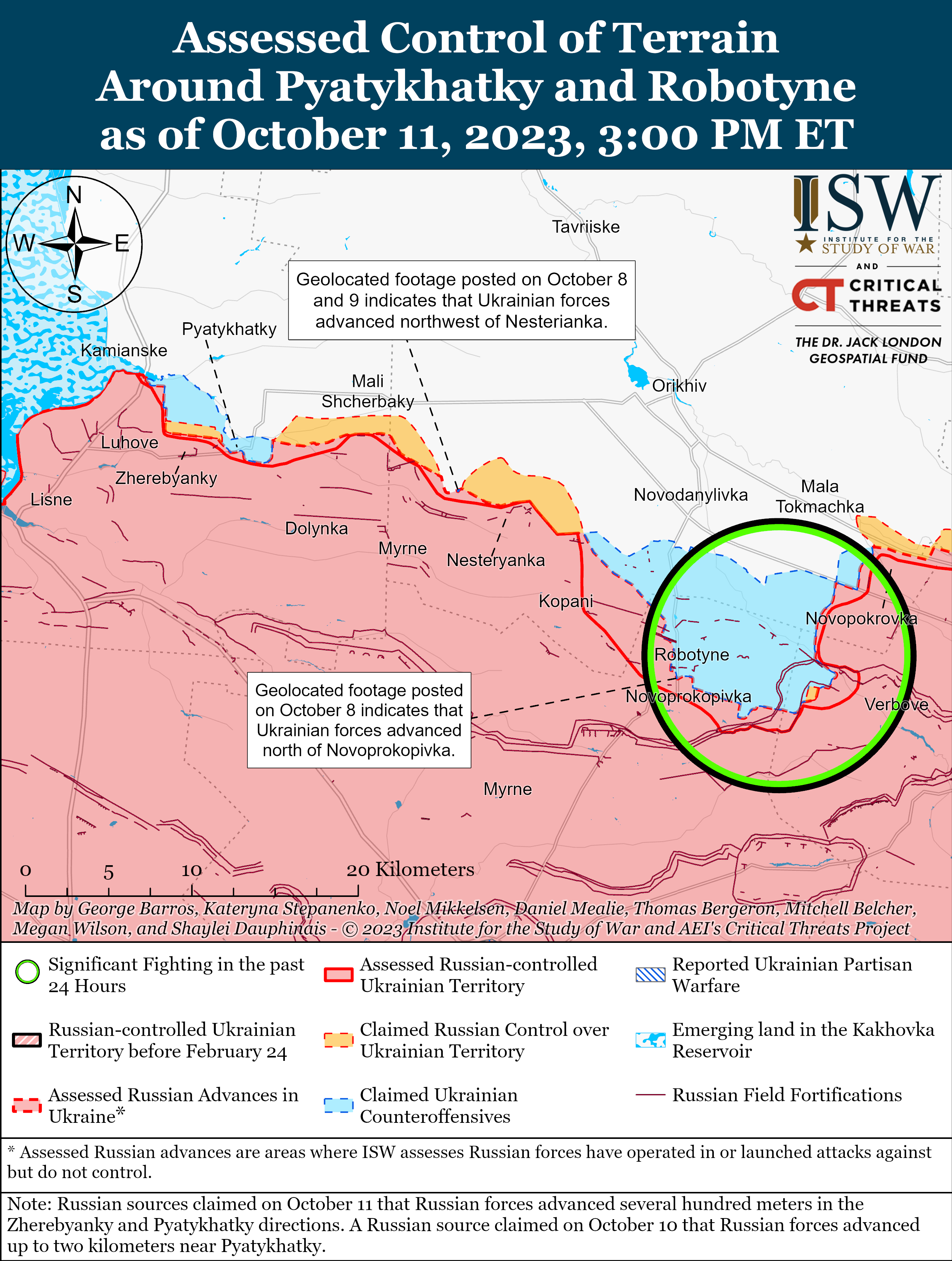
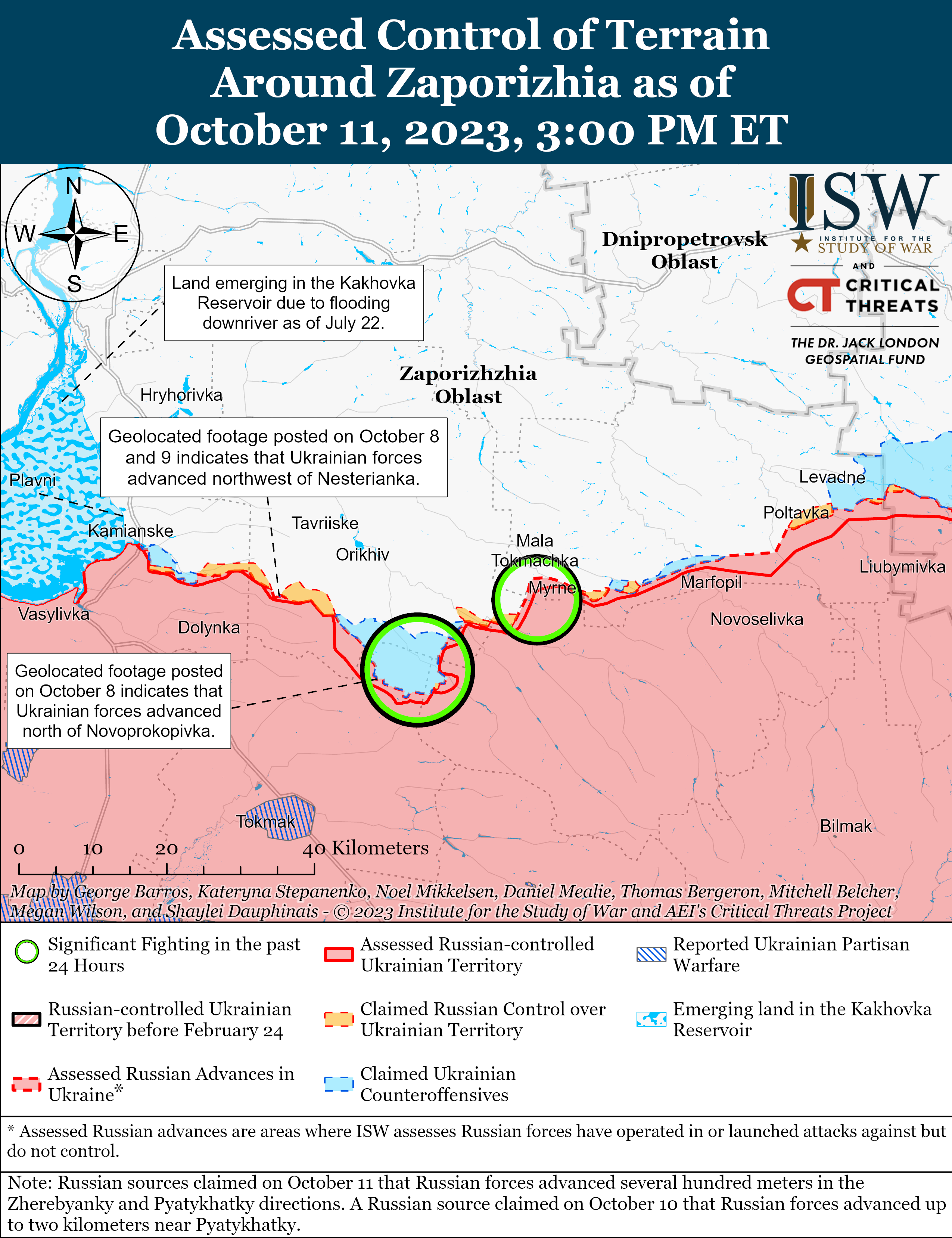
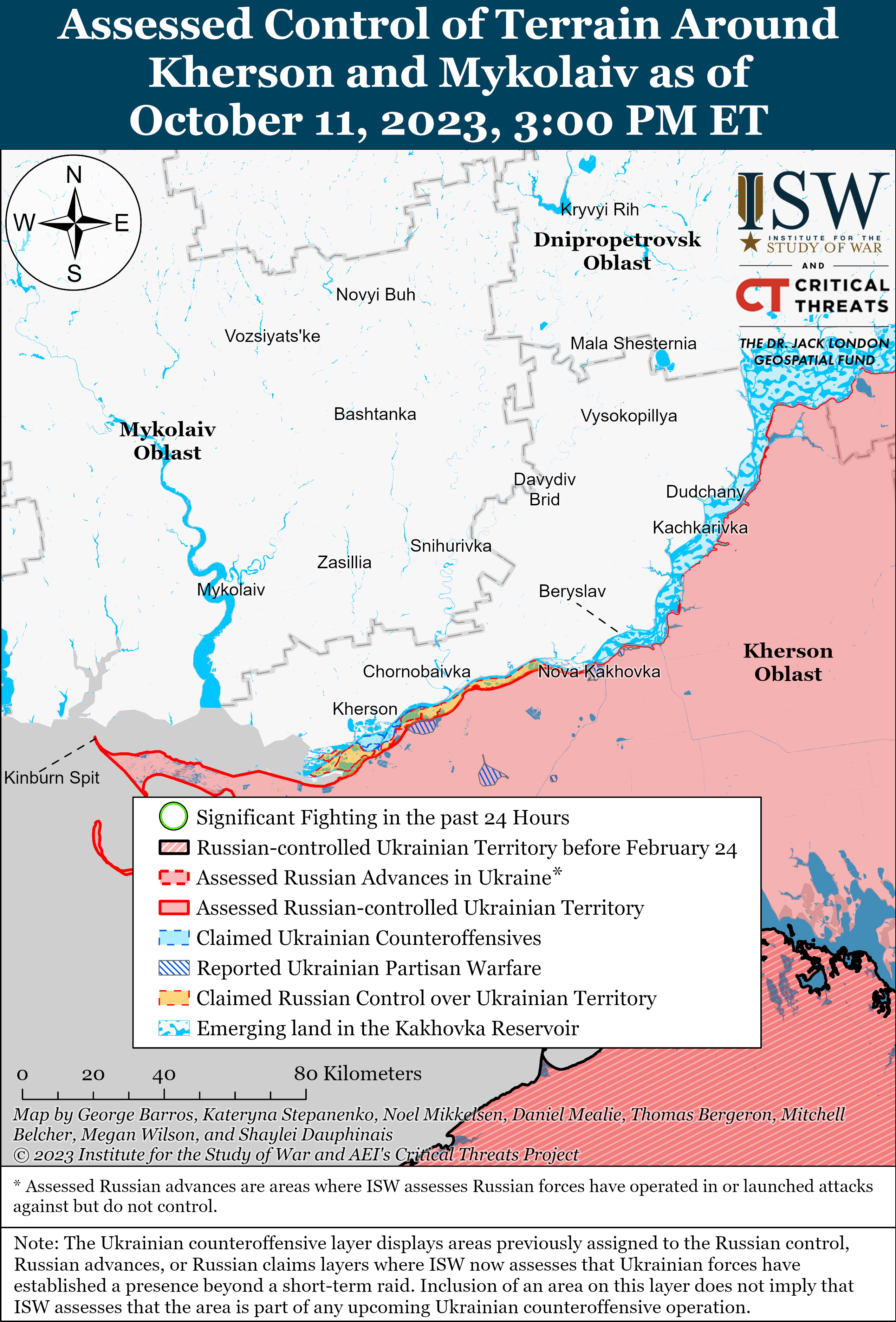
No comments:
Post a Comment